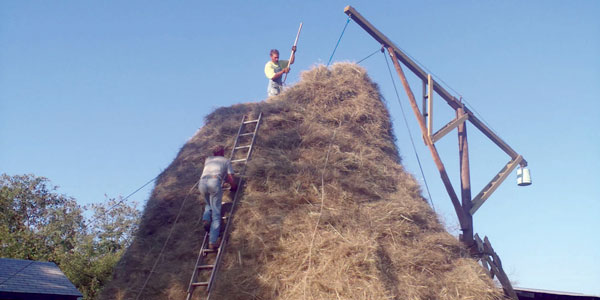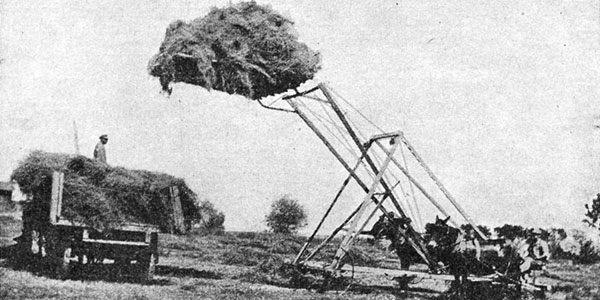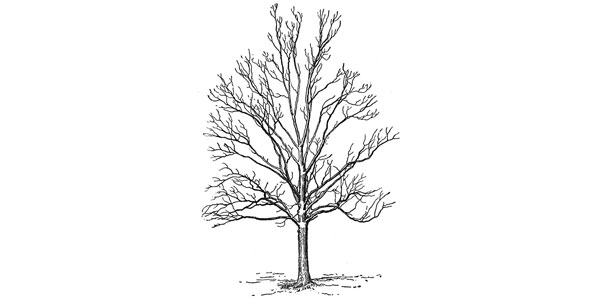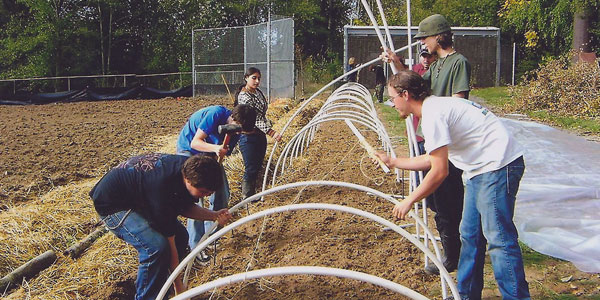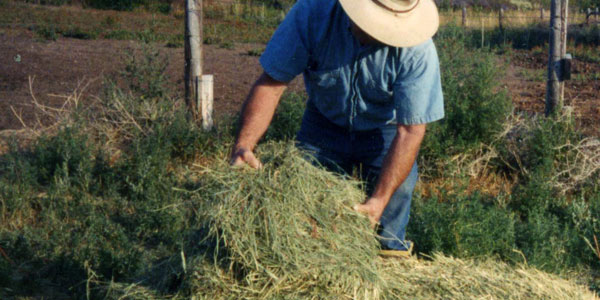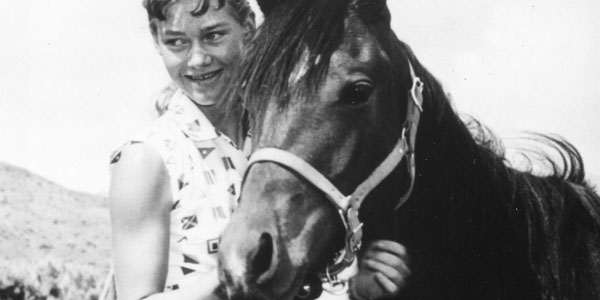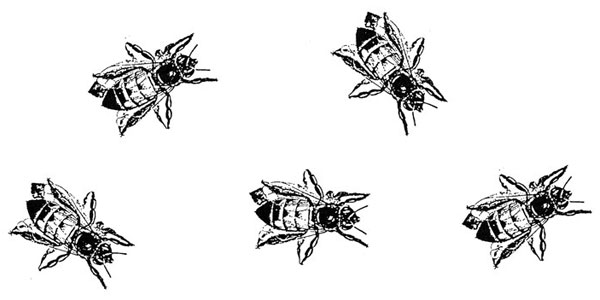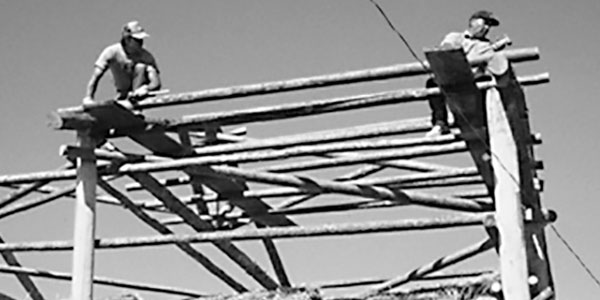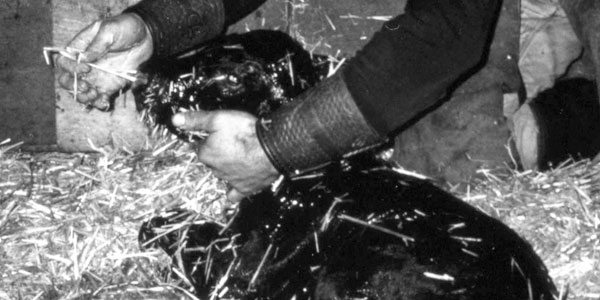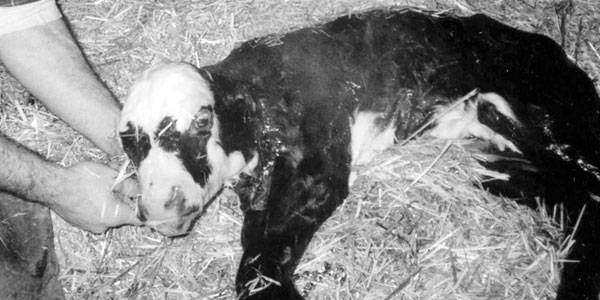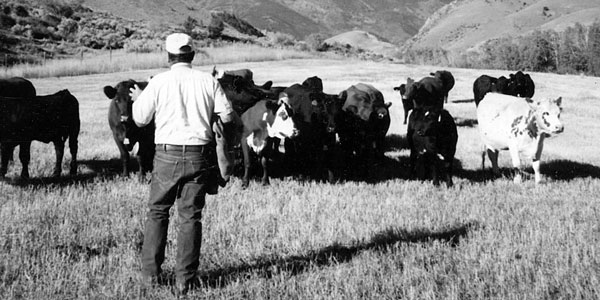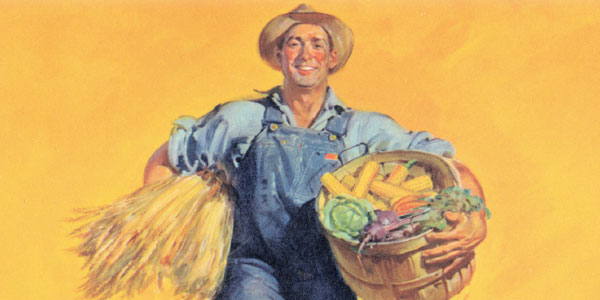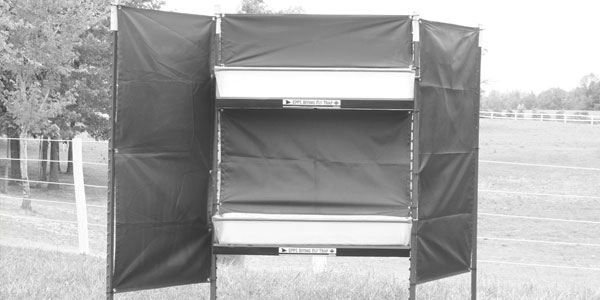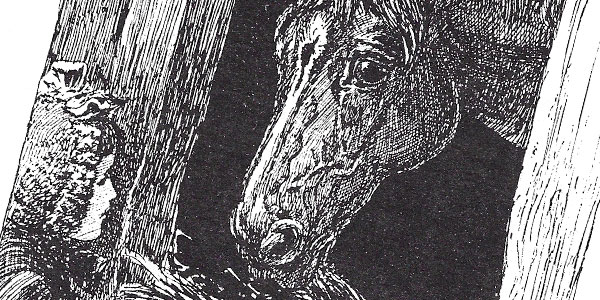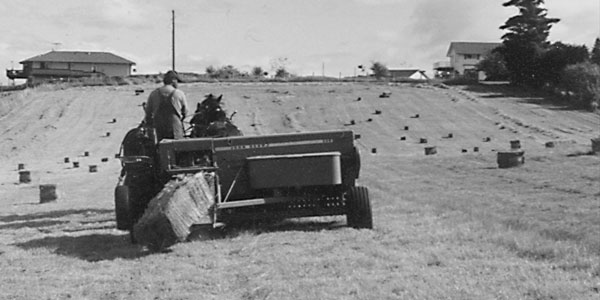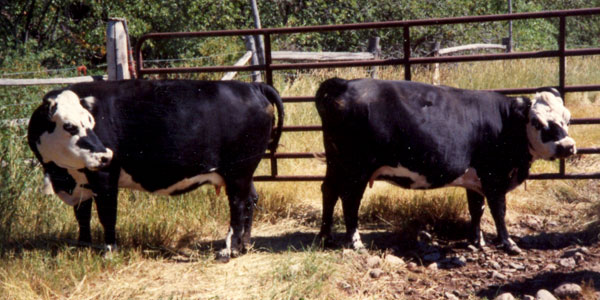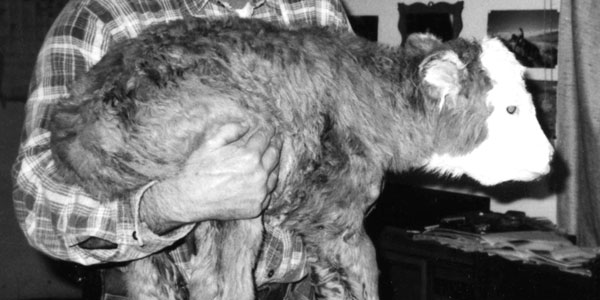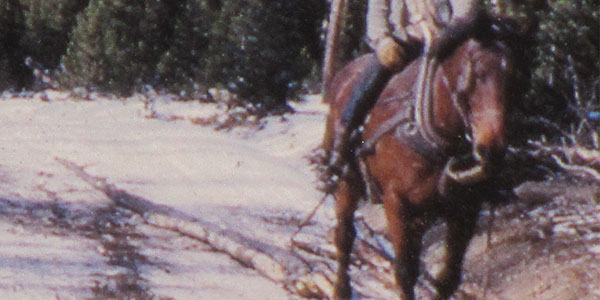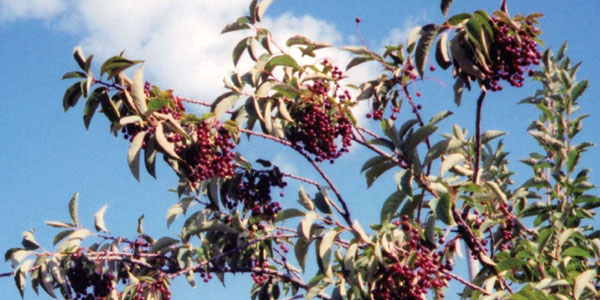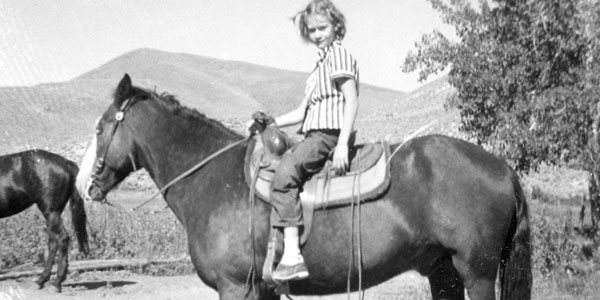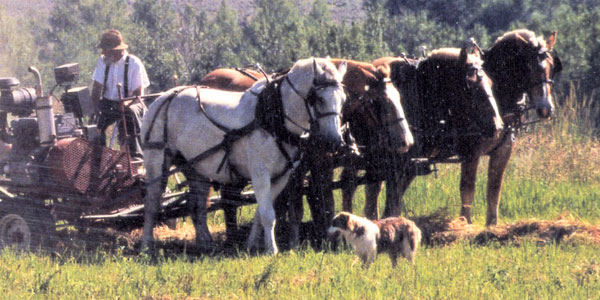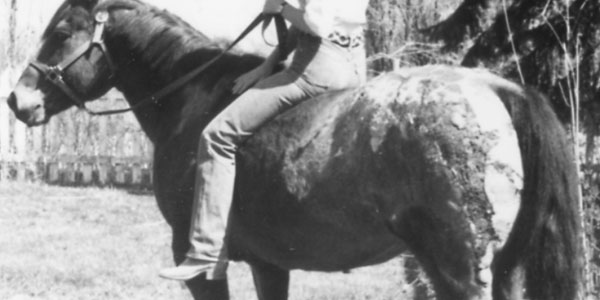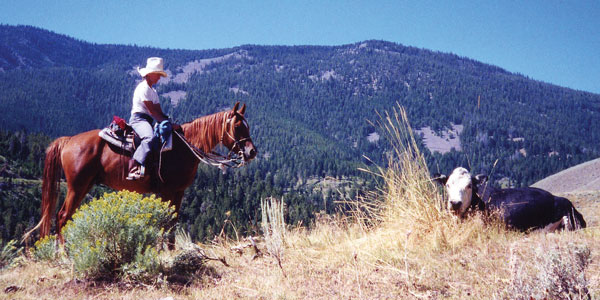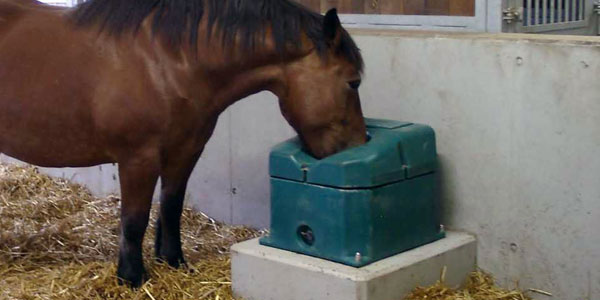Heather Smith Thomas
A Beginner’s Guide to Selecting Hay
When buying hay for livestock, there are several factors that must be considered besides the price per ton/bale and type of hay (legume, grass or a mix of grass and legumes). Two of the most important considerations are quality (nutritional make-up) and whether the hay is healthy and safe for the animals. A certain batch of hay may have excellent protein levels, for instance, but is still a poor choice if it is dusty or contains patches of mold.
A Business, or a Way of Life?
Many consultants and agricultural experts are trying to impress upon ranchers and farmers that our work should be a business and not a way of life, that in order to survive we must have better plans and become more businesslike: “Agriculture must cease to be a lifestyle and begin to be a business.” But farming and ranching can never really be just a business, for the family unit, as it is for big corporations. Yet, if we were to rely only on the “big guys” for our food, America would starve. We need the family farms.
A Life With Cattle and Horses
When I was 10 my parents acquired a small acreage in a canyon up a creek near Salmon, Idaho, and 2 years later started buying the neighboring ranch. This was a dream come true, because now our family had cattle and horses. During my teen years I worked on the ranch – irrigating our hayfields with water ditched from the creek, building fence, riding range to look after the cattle – to earn some cows of my own. The annual calf crop from my small herd helped pay my way through college.
Bandit Eyes – the calf who lived in the bathroom
The next morning we thought about taking her out to the barn to live with the milk cows’ calves, but the weather was still very cold. We were soft-hearted and decided to leave her in the house a little longer. Baby Michael was glad; he was fascinated by the calf and delightedly petted her like a big dog. As the day progressed, however, Bandit Eyes became livelier, bucking around and crashing into everything. Anyone going into the bathroom for any reason was immediately attacked by a bunting, slobbering calf.
Bees in Our Cellar
Our hillside cellar was dug in the late 1880’s and is still in good shape today. An entry-way with double doors creates some dead air space between the cellar and the outside environment, making excellent insulation. It’s a big cellar, and several of our neighbors have used it for storing apples, potatoes, onions, etc. But one year some adventuresome wild bees decided to make their nest between the double doors, creating a major obstacle for anyone trying to go in or out.
Building an Inexpensive Pole Barn
The inside of the barn can be partitioned into stalls of whatever size we need, using portable panels secured to the upright posts that support the roof. We have a lot of flexibility in use for this barn, making several large aisles or a number of smaller stalls. We can take the panels out or move them to the side for cleaning the barn with a tractor, or for using the barn the rest of the year for machinery.
Calves that Don’t Breathe at Birth
Heart rate is one way to tell if the calf is in respiratory distress, since it drops as the body is deprived of oxygen. Normal heart rate in a newborn calf is 100 to 120 beats per minute. Place your hand over the lower left side of the ribcage, just behind and above the elbow of his front leg. If heart rate has dropped as low as 40, the calf ’s condition is critical; he needs to start breathing immediately.
Calving: Delivering Backward Calves
Most calves are born head first, front feet extended. But a few are positioned backward and may not survive the birth process unless you are there to help. The number of backward calves in a herd during a calving season can vary from year to year, and all the factors influencing this presentation are not yet fully understood. While the fetus is growing in the uterus it is quite active and can change positions, especially while still relatively small. The position of a fetus when a cow is pregnancy-checked is not necessarily the position it will be in at the end of gestation when the birth process begins.
Calving: Knowing When to Check a Cow Can Save Calves
Most cows progress normally through the stages of labor; uterine contractions in early labor get the calf aimed toward the birth canal, the cervix dilates and the calf starts through. The calf entering the birth canal stimulates abdominal straining and second stage (active) labor begins – to push him on out. Sometimes, however, the calf does not start into the birth canal and the cow does not begin hard straining. If you don’t intervene, you’ve lost the calf (and the cow, if you don’t get the dead calf out of her). Knowing when to check a cow is crucial – and you have to be watching her to know how long she’s been in early labor.
Calving: Reasons for Pregnancy Losses
After a cow is bred, she should calve about 9 months plus 1 week later (283 days, on average). But sometimes accidents of gestation terminate pregnancy early, or other factors (disease or toxins) kill the developing calf. Immediately after conception, when the tiny embryo is traveling down the fallopian tube into the uterus, it is safe from harmful influences. After it reaches the uterus a few days later, it becomes more vulnerable to problems. The conceptus is called an embryo during the first 45 days of pregnancy; after that, all major organs and body systems have been formed and it becomes a fetus. If loss occurs before 45 days of gestation, it is termed early embryonic death.
Cattle Handling Part 1: Basic Cattle Handling
If they understand what you want them to do, and you give them time to figure it out, cattle are very easy to herd. Pressuring and release of pressure at the proper times will encourage them to move (or halt) and to go the direction and speed you desire. The herd will also stay together, moving as a group if you herd them calmly and don’t get them upset and excited. Best results are had when you move them at a walk, controlling the speed and direction of the leaders.
Cattle Handling Part 2: Use Good Cow Sense When Handling Cattle
Cattle are very intelligent, and are just as “trainable” as horses. Like horses, they “reason” differently than humans. Understanding the way cattle think and why they react to you the way they do can enable you handle them in ways that will help rather than hinder your purposes. If you can “think like a cow” you can more readily predict what cattle will do in various situations and be able to handle them with fewer problems.
Cookies for Josephine
We calve in January and February, and some years it can be very cold – and we calve the cows in a barn. Most of the older cows go into the barn readily because they’ve been there before. But the first-calf heifers are a different story. Many of them are hard to get into the barn. We solve this problem with a Judas cow – a gentle, older cow who leads the heifers into the barn. Even the wildest or most timid heifer will usually follow another cow. The old cow serves as security for the timid young heifer, and into the barn they go.
Diatomaceous Earth
At one time, I though diatomaceous earth was an end-all, be-all. But now I realize it’s just another ingredient, or component, of a healthy diet. There are thousands of natural things out there that have benefits for animals. For years I tracked the wild horses here in Owyhee County, to see what they were eating – to try to figure out why they would go from one place to the next. Then I would take samples of the soil and the plants there. If they need selenium, for instance, they tend to seek it out; they’ll go 25 miles to get it. They’ll eat around that area and graze awhile, and maybe eat a little of the dirt, then leave. The same is true when they need manganese.
Environmentally Friendly Fly Control
The battle against flies is constant, but there are ways to reduce these costly and irritating pests — without toxic chemicals. There are several types of pest flies, with different habits and behavior, so a combination of tactics is usually most effective when trying to eliminate or reduce flies. House flies and stable flies (the latter are aggressive biters, tormenting horses and cattle) breed in manure and rotting organic matter such as old hay and bedding. Horse flies and deer flies breed in swampy areas and black flies breed in flowing water.
Fighting Flies
Flies are the most common and troublesome external parasites of horses. During the warmer months of the year no region is free of these pests. Flies cause much irritation, and can also spread disease. Large numbers can result in excessive blood loss. Fly bites can also result in skin allergies due to hypersensitivity reactions. The annoyance from flies can disrupt grazing; horses may run frantically to get away from biting flies, or seek out shady areas to swish and stomp. Flies can also distract a horse when you are riding or working with him; he may pay more attention to flies than he does to you.
Grafting a Foal onto a Nurse Mare
The easiest time to persuade the mare to adopt the orphan is very soon after she herself has given birth. If her own foal dies at birth or soon after, she is more inclined to accept a substitute baby than she would a few days or weeks later; her maternal instincts are strongest right after birth. A mare that has lost her own foal generally makes the best nurse mare, for you can usually convince her to accept and raise the orphan as her own. Failing that, you can sometimes convince a mare to raise an orphan along with her own baby, but this takes more work, and some diligent monitoring for awhile.
How Horses Cope with Cold Weather
Horses readily adapt to winter weather. Cold temperature in itself is not a problem for a horse if he’s had a chance to prepare gradually by growing a winter coat as fall temperatures drop. Wind and wet weather are the factors that can chill a horse. In windy regions, horses need some type of shelter to protect against the wind chill that can whip away body heat.
In Praise of the Beef Cow
Humans have been raising cattle for thousands of years. The early ancestors of present-day cattle were tall, dark-haired bovines called Aurochs, roaming over what is now Europe. Early people hunted cattle for meat like we hunt deer and elk today; wild cattle were the main diet of Stone Age man. Eventually some of our ancestors captured cattle and tamed them, about 10,000 years ago. The tame cattle provided a handy supply of meat and hides, without having to hunt them. Then man discovered he could also hitch cattle to a cart, plow or wagon; oxen were used for transportation long before horses were. Cattle and sheep were domesticated before horses, probably because they were easier to catch.
Interpreting Your Horse’s Body Language
The person who works closely with horses usually develops an intuitive feel for their well-being, and is able to sense when one of them is sick, by picking up the subtle clues from the horse’s body language. A good rider can tell when his mount is having an off day, just by small differences in how the horse travels or carries himself, or responds to things happening around him. And when at rest, in stall or pasture, the horse can also give you clues as to his mental and physical state.
Just for Kids – Fall 1992
How Patty Gave Thanks • Thanksgiving Day • A Day with Ginger
Maggie – A Very Special Cow
When Dani was 5 years old she enjoyed “helping” grandma with the ranch chores every chance she got. Even though her mama and siblings still lived in town at that time, she wanted to come to the ranch and see the animals. She loved the cattle, but was a little afraid of the big ones. One spring day when she was tagging along with me to feed the horses and water the cows in the field above our house, she told me she wanted to pet a cow or calf.
Making Horse Hay
The difference between safe, high quality hay and low quality questionable hay (containing molds and dust) is primarily in the harvesting. The plants in a certain field will make some difference, of course — whether it’s a good stand of alfalfa, palatable grasses or has gone mostly to weeds — but poor harvesting conditions/methods can reduce a good hay crop to poor or even unsafe feed for horses.
Melva and Marla
When my husband Lynn and I were first married, in 1966, we had a dairy. Several of our Holsteins had twins that year and we had fun naming them. I particularly remember Vim and Vigor – fraternal twins, a bull calf and a heifer calf. The next year we moved to our present ranch to raise beef cattle, and even though we had a lot more cows, none of the beef cows ever had twins – until 1977, the spring that our kids (Michael and Andrea) turned 9 and 7.
Mob Grazing Improves Pastures and Stocking Rate
The term mob grazing is often used to describe short duration high-intensity grazing – with many cattle on a small area of pasture, moved once a day or even several times a day to a new section of pasture. Kevin Fulton, of Fulton Farms in central Nebraska, says not everyone has the same definition when they think about mob grazing. “We’ve been doing rotational grazing on our place for nearly 40 years, but didn’t do it very intensively until about 9 years ago when we started doing some daily moves and even some multiple daily moves,” says Fulton.
Norman – An Unlikely Cow
Some of the cattle we raise become such characters that we consider them part of the family. Norman was definitely in that category. She had a rough start in life but quickly became a sassy, independent critter that really didn’t consider herself a bovine.
Old Dot
One of the most fondly remembered horses was “Old Dot.” She came to the ranch as a young mare and worked there until she was about 30 years old. Dot was probably the most versatile horse the Thomas family ever had. They used her for riding, packing, haying, pulling any kind of wagon or equipment, and for “snaking” logs and poles out of the woods when they were cutting firewood or corral posts and poles.
Pinpointing Lameness in Horses
A careful observation of the horse will give clues, as we try to determine how his gait is affected and then try to figure out where the pain is coming from – which part of that leg is sore. Every horseman should become familiar with the way a sound horse moves, especially at the walk and trot, in order to more readily detect when a horse is “off.” Lameness is merely an alteration of gait as the horse tries to reduce the pain of weight-bearing on a certain part of his leg structure.
Plant Poisoning in Horses & Cattle
There are hundreds of plants that can be toxic to livestock. Some grow in specific regions while others are more widespread. Some are always a serious danger and others only under certain conditions. Poisoning of livestock depends on several factors, including palatability of the plant, stage of development, conditions in which they grew, moisture content of the plant and the part eaten.
Possum – A Wise Old Horse for a Beginner
His name was Possum — perhaps he got that name because he was lazy and often pretended to be asleep. He was owned by a teenage girl who was buying a younger horse. Possum was a bay gelding with a white face and a blue eye where the white marking surrounded the eye. He was calm and gentle (some people would say lazy) and accustomed to being handled by children. He’d been retired from a riding stable in a larger town, purchased by a family with young children. He was resold when those children grew older, and resold again. It would be hard to guess how many children had learned to ride on him.
Prevent Heat Stress in Hard-Working Horses
High summer temperatures can present special problems for horses, especially if they are exerting. Temperatures above 80 degrees F can greatly increase the chance for trouble if relative humidity gets above 50%, with no breeze, making horses more susceptible to heat stroke. Under these conditions, a horse has difficulty cooling himself, since sweat does not evaporate when air is humid. Extremely hot weather can cause problems, even in a horse that is not exerting. One advantage in a dry climate is that humidity is generally low. Horses can usually cool themselves adequately by sweating, unless they become dehydrated by having to sweat too much, too long.
Ruminant Physiology Facts
Unlike humans that have a simple stomach and only chew their food once, cattle have 4 stomachs. Like other ruminants (sheep, goats, elk, deer, etc.) cattle can eat their food hurriedly, then burp it up and rechew it more thoroughly later. The largest stomach, the rumen, acts as a fermentation vat to break down fibrous parts of forages that a simple stomach cannot digest.
Safety Factors to Consider When Handling Cattle
Most accidents happen when people handling cattle don’t understand basic cow psychology, being in the wrong place at the wrong time or trying to force an animal to do something it doesn’t understand. Cattle can be dangerous when handled in a confined area if they panic and become defensive. Their reaction to a perceived threat to their safety is to flee or fight, and if they don’t have room to run away they will attack. Wild, nervous cattle are more dangerous in close quarters such as a small corral or barn stall because they panic quicker and need a lot more room (bigger flight zone). They may become defensive and charge at you, even if you are some distance away. Accidents at calving time may occur if a cow considers you a threat to her calf.
Selecting Hay of Good Quality
Good grass hay will provide all the nutrient requirements (energy, protein, vitamins and minerals — and in proper balance) for the adult horse, and a mix of good grass and alfalfa hay will provide everything needed by the young growing horse or lactating broodmare, since the alfalfa has more protein, calcium and vitamin A than grass hay. Horses being fed high quality hay do not need expensive supplements and only a minimum of grain (most horses on good hay will not need any grain at all). But if hay is not good, its deficiencies must be made up with supplements and/or grain.
Stories of Ranch Life
Throughout Thomas’ stories the reader will feel the importance of the human relationship to the land and animals, but also the value of family. “Lynn and I chose ranching because we wanted to raise cattle and horses, but soon discovered that a ranch is also the best place to raise children. Some of our kid’s first memories are of feeding cows. They went along with us as babies because mama had to drive the jeep.”
The Equine Eye
The horse’s head is large, with eyes set wide apart at the sides of his head; he seldom sees an object with both eyes at the same time and generally sees a different picture with each eye. In the wild, this double vision was a big advantage, making it difficult for a predator to sneak up on him. He can focus both eyes to the front to watch something, but it takes more effort. Only when making a concentrated effort to look straight ahead does the horse have depth perception as we know it.
Treating a Burn
First aid treatment for a serious burn should include ice packs or cold packs, or even cold water from a garden hose – as soon as possible if the burn was caused by excessive heat, to try to reduce the depth of the burn and minimize the tissue damage. Painkillers should be given, and antibiotics will be needed to help prevent infection in the damaged tissues, and head off pneumonia.
Typical Range Ride
I head up the steep trail through the rocks and sagebrush behind our house. The smell of dewy sage fills my nostrils as my horse brushes the shrubs along the trail, and a horned lark flits up from her nest on the ground as we go by. A mother grouse bursts into the air and does her broken-wing act (her strategy to lead a predator away from her babies, who are scattering out through the grass).
Water Requirements of Horses
Water is an important ingredient of the horse’s diet, since it is crucial for proper function of the body. This “nutrient” makes up 65 to 85 percent of a foal’s body weight, and about 68 to 72 percent of an adult horse’s body weight. A 1000 pound horse’s body contains about 80 gallons of water. Even small changes in total body water can have a negative impact on a horse’s health and well being. Water is contained within all body cells, between cells, and is an important component of blood, joint fluid and lymph.

